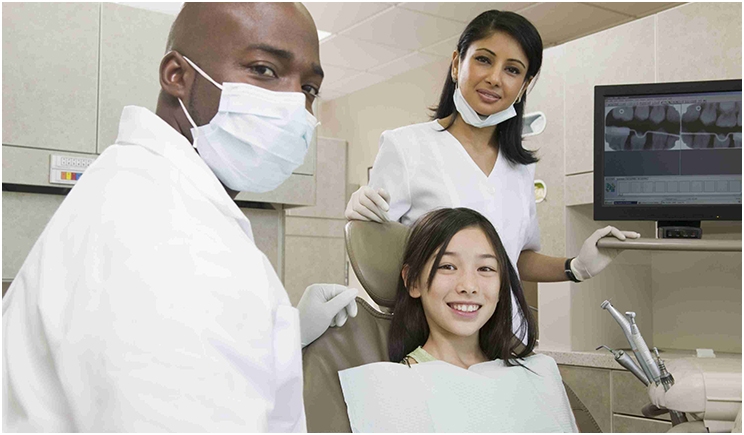
As the new year starts and dentistry is lauded as one of the top jobs in the nation, it’s time to take stock of the profession and look at how we can improve the way we care for our patients. But first, we also must recognize the obstacles that prevent better oral health.
The Challenges
There are three challenges that most dentists are facing: insurance companies, patients who are insurance-driven, and lack of collaboration from MDs.
Due to fee reductions from insurance companies, more and more dentists are becoming fee-for-service offices. Each year, insurance companies are lowering the fees they pay dentists for dental procedures or deleting procedures from their list altogether. When an office is fee-for-service, though, it means it isn’t in network with any dental insurance company and gets full payment right from the patient. Only patients who can afford treatment, then, get it.
Another issue that all dentists face is getting insurance companies to pay for treatment. Our office has seen very creative excuses for claim denials such as never receiving the claim (even though we have proof we sent it), needing x-rays for the claim (even though x-rays had already been submitted), and, our favorite, saying the tooth number was mislabeled (even though it clearly wasn’t). Insurance companies simply make it harder for dentists to get paid and for patients to receive proper coverage.
Insurance-driven patients also provide another challenge for dentists because they make decisions on their dental care based solely on what their insurance will cover and not on what they truly need. Most insurance companies will only cover two cleanings a year, and several stipulate that the two cleanings must be six months apart to the exact date.
Typically, a six-month recall is far too long for most patients with bleeding gums, which is a sign of disease. Our hygienist often recommends a three-month recall, but the first thing out of the patient’s mouth often is “My insurance only covers two cleanings a year. I don’t want to pay if they don’t cover it.” These patients would rather come twice a year even if in the end they develop gum disease requiring antibiotics, surgery, or tooth loss.
Lack of collaboration with MDs is another challenge. For example, many dentists are branching out and fabricating oral appliances for patients who suffer from sleep apnea but don’t comply with continuous positive airway pressure (CPAP) treatment. We’ve had several patients who have needed sleep test prescriptions from their MDs to get their sleep appliances covered by their insurance. When they visit their MDs, they are told that their only option is to use CPAP, which is definitely not the case.
Most dentists treating sleep apnea are unable to discuss their patients’ progress with their MD. We send letters via mail and fax and rarely get a response from the MDs or anyone in their office. If MDs were open to working with dentists, we could truly make a huge difference in our patients’ lives.
What Needs to Change
What I primarily would like to see happen in dentistry and in all of healthcare is a change in how we go about deciding how to treat our patients. It all starts by asking two questions:
- What’s happening?
- What can we do about it?
All too often, it’s just these two questions that we answer. As a result, we treat and retreat symptoms on a daily basis. The real question we need to be asking ourselves is why the issue is happening. When the why is answered, we determine the cause of the problem. Treat the cause and symptoms go away, especially when it comes to periodontal disease and tooth decay.
Patients who are prone to periodontal disease and tooth decay simply aren’t brushing and flossing properly. Dentists need to let these patients know how they can improve their brushing and flossing. These patients also need a three-month recall for hygiene. By doing this, we are dealing with the cause and helping the patient be proactive.
Crowded or crooked teeth, however, are a little more complex. If you have crooked or crowded teeth, your dentist will refer you to an orthodontist who will straighten your teeth. Often times, this is achieved through braces and extractions. Once the teeth are straight, the orthodontist will make retainers and/or bond wire to the lingual of the upper and lower anteriors to hold the teeth in proper position.
But let’s think for a minute. Why are the teeth crooked and crowded? I believe crooked teeth are symptoms. Traditional orthodontic treatment leaves the cause still there, which is why people experience orthodontic failure.
I believe we all need to think more and answer the question why!
Dr. Gorman is a highly trained practitioner with more than 40 years of experience in dentistry. He specializes in the treatment of temporomandibular joint dysfunction, sleep disorders, and epigenetic orthodontics. Dr. Gorman is a Diplomate of both the American Academy of Dental Sleep Medicine and American Sleep and Breathing Academy. He is a Fellow of the International College of Oral Implantology (2006) and a Fellow of the International Academy of Dental Facial Esthetics (1998). His office is an Accredited Facility for the American Academy of Dental Sleep Medicine. He is a certified provider for the ALF as well as the DNA appliance. Dr. Gorman has been an active member of the Lee Institute for Oral Bioesthetics and Function since 1995. Since 1999, he has completed more than 5,000 hours of continuing education in various disciplines of dentistry, including dental sleep medicine, dental implants, bioesthetic dentistry, orthodontics, and temporomandibular joint dysfunction. He can be contacted at mgormandental.com.
Related Articles
Dentistry Named Fourth Best Job By US News & World Report
Dentistry: Do It for More Than the Money
Technology and MAGO Can Help Chronic Migraines Amplified by TMD











